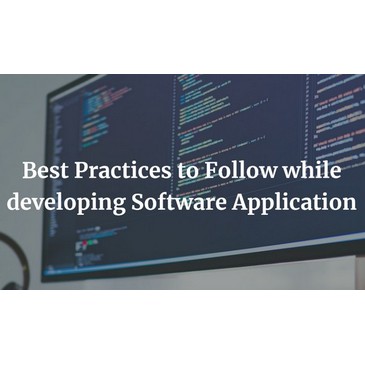In today’s world, a lot of companies are building their products using MVP software development. The cost of custom software development can be high and the time taken to develop it may not suit the business requirements of your organization. So how do you reduce this cost while still getting a quality product at an affordable price?
Here are some tips:

Table of Content
Jump ahead to:
What is MVP?
MVP stands for Minimum Viable Product. This means that your product should have the most essential features, and you can use it to test the idea.
You also want it to be something that can help you learn if your idea is viable or not before investing too much time and resources into developing a full business strategy around it.
Choose the Platform Wisely
When choosing a platform, it’s important to consider how you plan on using it. If you are building an MVP and will only need the features of one particular app or service, then using one of the platforms provided by them may be fine.
However, if your goal is to create multiple applications with different functionality and functionality within each application (for example), then choosing a platform that doesn’t allow for this flexibility is likely going to cause problems down the road.
It’s also important not to choose a popular but less flexible option simply because it’s cheap or offers many additional features—there are plenty of other options out there!
Implement the most essential features first
The first step to reducing custom software development cost is to implement the most essential features first.
This will allow you to focus your efforts on the most important aspects of your product, which will help reduce costs overall.
Don’t spend time on features that you will not use or need in the future.
For example, if a particular feature does not have any users at all then it’s probably not worth implementing at this stage of development.
Similarly, if there is no demand for adding new features in your MVP then there isn’t much point in spending money developing them (or waiting until after launch).
Build an MVP that works on any device and with different OS
To build an MVP that works on any device, you must use a responsive design. Responsive design is the practice of designing your website so that it can be viewed on all different devices and operating systems.
This includes mobile browsers, tablet devices, desktop computers and more.
To create a responsive website for your MVP:
• Use CSS media queries to make sure images are displayed correctly across different screen sizes (iPhones/Android phones).
Media queries help you make adjustments when someone lands on one of the various screens that your site supports by identifying what device they’re using or where they’re located geographically at this moment in time because some screens might have disabled features such as icons or fonts depending on where someone lives in relation to other cities around them or their geographic location somewhere else altogether!
• Use frameworks like Bootstrap which support multiple device types including Android tablets too!
Be careful with the scope
Scope creep is one of the most common problems in MVP software development. It happens when you have a client who keeps adding more features, or your team keeps adding more features, or both!
If you’re not careful about how much work you assign to each person on your team and how much work they think they can accomplish in a given period of time (and even if you are), scope creep will happen.
Share the product vision early
Share the product vision early. This is one of the most common mistakes that most companies make when it comes to MVP software development cost reduction.
It’s important for you to understand your business and its customer base, so that you can create a product that meets those needs, but also serves as an opportunity for growth for both parties involved in your business model.
The best way to do this is through interviews with potential customers and partners who will be using or benefiting from your product line (or services).
This can be done through focus groups or even surveys if possible – depending on how large or small an operation you have going on currently!
Get ready to come back to the app after launching it
While you’re developing the MVP, make sure you have a clear vision of what it should do. No one is going to buy an app if they don’t know what it does or how much they can use it.
If your MVP isn’t useful enough for your target audience, then consider redesigning it until it meets their needs.
Once you’ve launched and tested out your MVP with real users, be prepared for some changes!
The goal here is not just to make sure that people like the product but also helping them understand how they can use it better (e.g., adding context).
Another important thing is keeping track of all feedback during development so that when there are new ideas or suggestions from developers who work on improving certain aspects of the interface/UX design – those ideas will be incorporated into future updates without having any major issues caused by previous versions being unstable due lack proper testing beforehand.”
Any software project requires proper planning and thinking ahead, even more so when it comes to MVP development because it’s especially important to find a balance between your product’s quality and costs when you’re building an MVP.
When you’re building an MVP, it’s important to remember that the product is not meant to be perfect. It should have as few features as possible, but still deliver the maximum value to customers.
The idea behind this approach is to test the market and see if there’s demand for your idea before investing too much time and money into it.
Once you’ve identified what your minimum viable product needs to include, start asking yourself these questions:
• How can I build something that makes sense? Is there enough demand in my target audience? And how will I know if they want it?
• What do my customers need from me right now (and in the future)? Where do they spend their time online?
Do they spend money on products like mine at all? Do they interact with similar brands like yours on social media networks like Facebook or Twitter daily (or weekly)?
Does anyone else offer similar services
as mine yet so we can compete against them head-to-head without having any real competition between us yet!
Conclusion
In conclusion, an MVP can be a great way to test the water for your product. It’s also a good idea to select a platform that you’re familiar with and then find out what kind of features you need to build into it first.
Once you have at least one MVP in place, then it’s time to start thinking about how the rest of your app should look like.
Want to transform your idea into reality? Are you looking for an MVP development service, You can contact Groovy. Their experienced MVP development team will help to transform your thinking into reality.












Leave a Reply